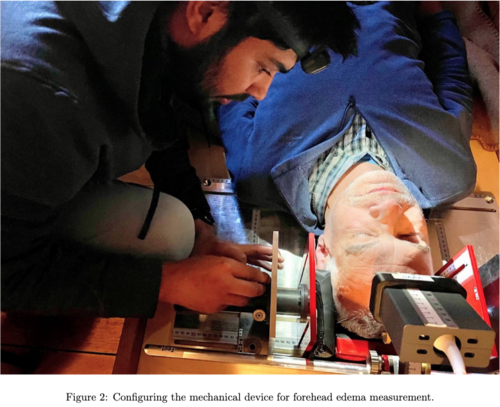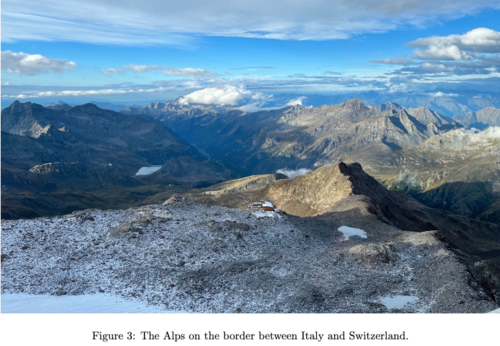Harsh Patel: Myocardial Regeneration through Hypoxia in Humans
Harsh Patel: Myocardial Regeneration through Hypoxia in Humans
Introduction
The support of the Graduate Research and Internship Program through The Europe Center and the Stanford Club of Germany enabled me to pursue an internship in K ̈oln, Germany this summer. The fel- lowship provided me with an invaluable opportunity to spend two months at the German Aerospace Center (DLR) Institute of Aerospace Medicine, where I supported cardiovascular research led by Dr. Ulrich Limper and Dr. Jens Tank.
Although my primary interest is in tackling the engineering challenges associated with spaceflight, I realize that many biological and physiological barriers need to be overcome to make long-term manned spaceflight safe and routine. This motivated me to get exposure to the field of aerospace medicine, to understand short- or long-term physiological effects from operation in extreme space environments, and to formulate effective countermeasures for future missions to our planetary neighbors.

MyoCardioGen Study
Cardiovascular diseases are a broad group of diseases that are responsible for complications such as cardiac arrhythmia, strokes, and myocardial infarction. Cardiovascular diseases are the leading cause of death in highly developed industrial countries and are characterized by their affect on the heart muscle, also known as myocardium. The myocardium consists of cardiac muscle cells, called cardiomyocytes, which are responsible for generating contractile force required for rhythmic heart beats. Unlike most cells in the hu- man body, cardiomyocytes are terminally differentiated and can no longer undergo the process of cell division.
However, researchers at the University of Texas have recently shown in experiments with mice that severe hypoxia (i.e. oxygen deficiency) of 7% oxygen over a period of two weeks, compared to the normal 21% in standard atmospheric conditions, leads to cardiomyocyte proliferation again. The heart function in these mice also significantly improved after two weeks of hypoxia. As a result, current research priority is given to regenerative medicine as a form of treatment for patients with cardiomyocyte loss.
During my summer visit at DLR, I supported the MyoCardioGen study, which investigated whether it is possible to induce cardiomyocyte division to replace diseased myocardium with new healthy tissue. The specific objective of the MyoCardioGen study was to demonstrate myocardial regeneration through hypoxia in humans and conclusively show whether a patient’s heart function improves in the long term.
Four subjects with prior myocardial infarction were placed in a high-altitude, low-oxygen environment. The first part of the study took place on Monte Rosa in the Italian Alps over a period of ten days. After the initial exposure and acclimatization to high altitude up to 4,600 meters, the subjects were moved to the DLR :envihab (from “environment” and “habitat”) to investigate more intense hypoxia up to 6,000 meters and subsequent impacts on heart function. If successful, the results of this medical study could guide the development of medical technology and clinical protocols as a form of therapy. Myocardial regeneration through hypoxia would be a ground-breaking treatment for millions of people affected by cardiovascular diseases worldwide.
Edema Measurements
My specific role on the MyoCardioGen team was to take a series of peripheral edema measurements. Peripheral edema is a condition characterized by an excess of fluid collecting in various tissues of the body. Edema formation indicates microcirculatory failure and aggravates the metabolic situation of the affected tissues. Even a healthy person, when exposed to extreme environments, can develop edema. For example, mountaineers, ultra-endurance athletes, scuba divers, and astronauts are all subject to the threat of edema formation in various parts of the body.
Hypoxia and low air pressure can induce stress factors onto human bodies and, depending on the location and severity of the edema, the symptoms could range from mild discomfort, decrease of physical and mental performance (e.g. puffy face of an astronaut or acute mountain sickness), to severe respiratory distress or even death (e.g. high altitude cerebral and pulmonary edema). Although it is simple to confirm the diagnosis of edema in a qualitative manner, it remains challenging to quantify the edema development and to track the physiological changes.
During her internship at DLR Institute of Aerospace Medicine in 2018, Dr. Monica Hew finished the design and construction of a mechanical device and the programming of a MATLAB-based analysis software used to study microcirculatory failure from exposure to hypoxia. At that time, she applied the device and software in 19 healthy individuals during a hypoxia study conducted at the DLR :envihab in collaboration with researchers from the D ̈usseldorf University. However for the MyoCardioGen study, we wanted to mea- sure peripheral edema on the forehead and tibia in subjects with prior myocardial infarction. This important next step was the main objective of my internship at DLR.

Parting Remarks
The MyoCardioGen study enabled me to work closely with the DLR team to: 1) develop my fundamental knowledge of aerospace medicine, 2) obtain a unique experience in medical field testing on humans, and 3) contribute to cardiovascular research that has the potential to improve the quality of life for countless indi- viduals affected by cardiovascular diseases. However, the applications of this research are not limited to life on Earth. For example, a better understanding of the underlying physiological mechanisms for myocardial regeneration through hypoxia can advance the development of medical devices and protocols that improve astronauts’ health on extended spaceflights.
The support from the Graduate Research and Internship Program gave me an opportunity of a lifetime. I was fortunate enough to visit Germany for the first time and learn about its culture, language, cuisine, and lifestyle through immersion. This was an unforgettable collaboration with DLR Institute of Aerospace Medicine, and I am eternally grateful for the The Europe Center and the Stanford Club of Germany for making it possible. I am already looking ahead to my next visit to Germany.


